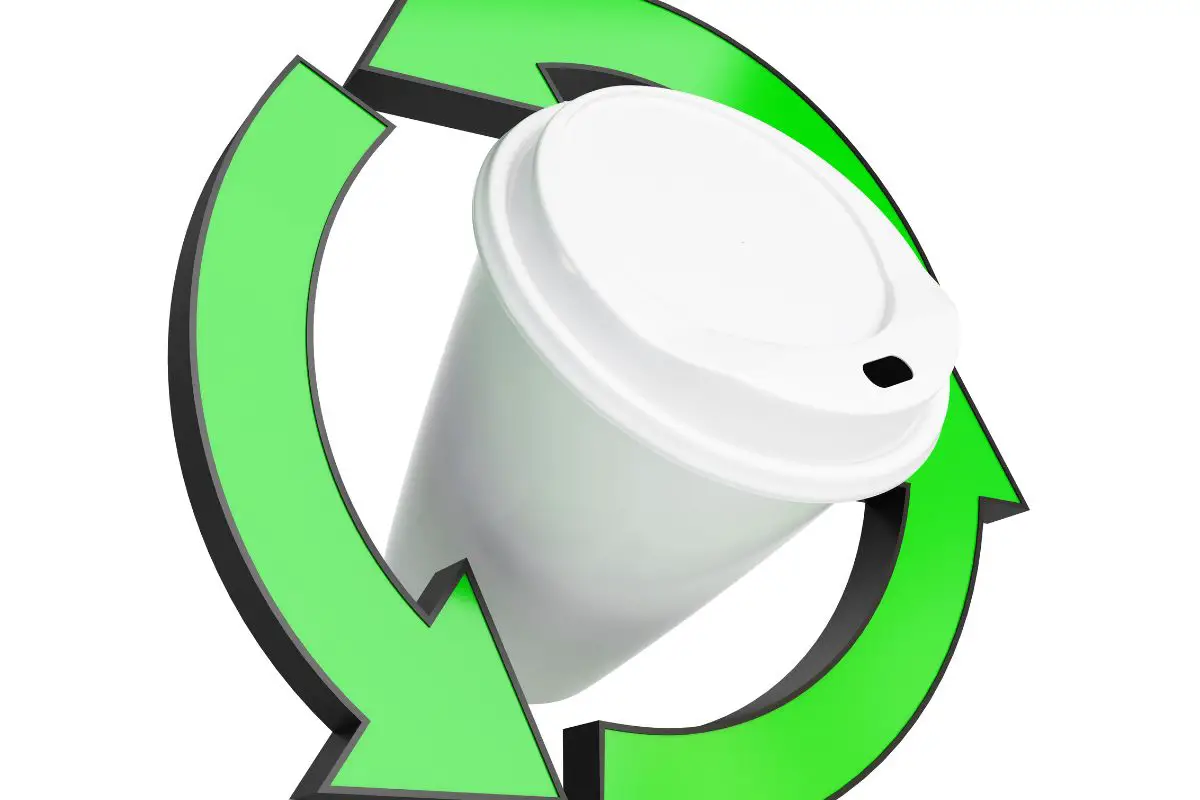Millions of people drink coffee daily around the globe, with the majority being Americans. Coffee lovers who choose convenience over quality often buy coffee from coffee shops, which is often served in single-serve coffee cups. Unfortunately, coffee cups have contributed to the degradation of the environment.
Recycling waste items helps in reducing pollution. However, recycling coffee cups is not yet widely available in most parts of the globe, including North America. If you are wondering how to recycle coffee cups, continue reading through this article to learn whether it is possible.

Is It Possible To Recycle Coffee Cups?
Recycling single-use coffee cups has proven difficult for many years now. Essentially, paper coffee cups have an interior lining made of a polymer. The polymer is a plastic material. It is challenging to recycle the polymer. As a result, paper coffee cups are sent to landfills where they continue piling up over the years. The cups produce methane gas, which damages greenhouse gases. Thus, they contribute significantly to the degradation of the environment.
Unfortunately, many curbside recycling bins do not accept paper coffee cups. They also decline plastic cups that are used to serve iced beverages due to their polypropylene composition. Research shows that only 3 percent of the most commonly used plastics are recycled in the U.S.
Some to-go coffee cups are marked as compostable and biodegradable. They are made differently from paper coffee cups in that they use a lactic acid (poly) lining that can be composted. However, composting them is not always easy since they require special commercial composting facilities. That means a home composter cannot break them down. You have to send them to commercial composters which are still rare to find in most areas.
Some paper coffee cups are made of a polylactic acid lining instead of a petroleum-based polymer. Polylactic acid is made from corn starch. Although it is a bio-based plastic, it is only broken down under extreme temperatures. Again, a home-based composter may not be able to break it down. Also, commercial facilities that break down this material are limited.
Although they are known as “paper cups”, they are not recycled like regular paper and cards. Their recycling process is special due to the inner plastic lining. The role of the plastic lining is to hold coffee in the cup and prevent the paper material from soaking. While this lining is advantageous, it brings about problems with recycling.
New Technologies for Recycling Coffee Cups
Separating the plastic lining from paper has been almost impossible for many years. Many recycling facilities are still unable to recycle coffee cups. Fortunately, new technologies that make it possible to separate paper from plastic are emerging.
For instance, the Material Recovery Facility (MRF) based in Denver, Colorado boasts the first American recycling facility to remove and recycle paper fibers in coffee cups. The facility uses high-consistency rotors to remove the plastic lining without compromising the paper’s integrity.
Today, there are only a few MRF locations across the U.S. Their advanced technologies for separating plastic and paper products are making it possible to recycle coffee cups. However, it is still challenging to send paper coffee cups to these facilities for recycling.
How to Recycle Coffee Cups
Current technology makes it possible to recycle coffee cups. However, it is still difficult to locate facilities that recycle coffee cups. While switching to compostable coffee cups can help, home composters are not powerful enough to break them down. Also, it is still hard to find commercial facilities that recycle compostable coffee cups.
The best solution to the menace of coffee cups is to avoid using paper coffee cups altogether. Coffee shops should be encouraged to allow customers to be served in their own reusable mugs. Some restaurants are now serving beverages in reusable plastic cups and a good number of them offer discounts for reusing coffee cups.
The biggest challenge to reusable coffee mugs is that not everyone may afford them. Also, it is not always possible to carry them with you everywhere. Probably, the last resort is for the government to regulate the use of coffee cups. If the government fails to do it, consumers should start demanding for regulations to save their environment.
Final Thoughts
The innovation behind coffee cups makes it possible to drink coffee while on the go. They are often made with paper and plastic lining, which makes it hard to recycle them. If you are seeking ways how to recycle coffee cups, the best solution is to stop using them. Preferably, buy a reusable coffee cup. Try as much as possible to carry it with you when visiting a coffee shop.
Besides, compostable coffee cups are not yet a reliable alternative since there are only a handful of facilities that recycle them. Hence, they mostly end up in landfills that are unable to break them down. Before the government regulates the use of coffee cups or before recycling facilities become more accessible, avoid coffee cups whenever possible.